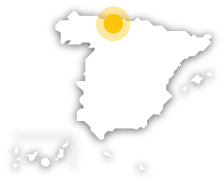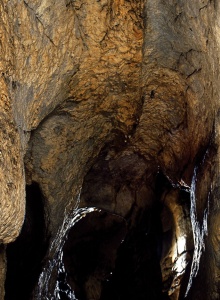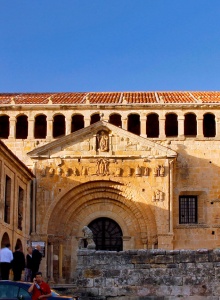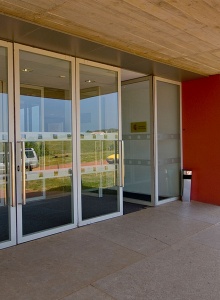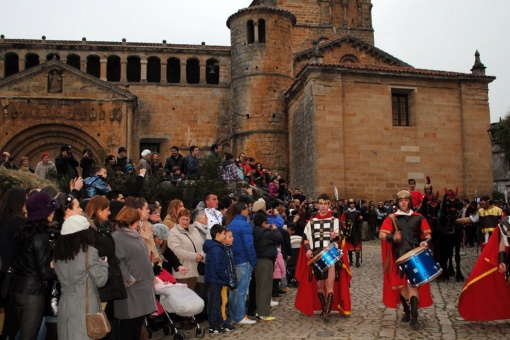However, this Cantabrian town houses its greatest treasure on its outskirts: the Altamira Cave, known as the ‘Sistine Chapel of the Palaeolithic’ and declared a World Heritage Site.
The local cuisine and the incredible natural spaces in the surrounding area are other attractions that this town offers.The Jacobean route, along its northern variant, traditionally passes through one of the best-preserved medieval sites in Cantabria: Santillana del Mar. To reach this town, pilgrims heading towards the capital of Santiago de Compostela had to cross the estuaries of Pas and San Martín de la Arena.The origins of the town date back to the 8th century, when a medieval village began to emerge with the Collegiate Church of Santa Juliana as its centre, a building that would later give its name to the present-day Santillana del Mar.The centre of this town, which has been declared a National Monument, is still the collegiate church, considered one of the greatest examples of Romanesque architecture in Cantabria. Built on the site of an ancient hermitage in the 12th century, it has a cloister with magnificent historiated capitals, as well as an impressive façade decorated with sculptures and a pantocrator (a representation of Christ framed in an almond-shaped structure).Through Calle de Santo Domingo, the main street of Santillana, you enter a historic quarter that has managed to survive the passing of the centuries while maintaining an excellent state of conservation. Its picturesque cobbled streets are flanked by stately buildings, most of which were built between the 14th and 18th centuries.From the medieval period, you can see the Torre del Merino (14th century) and Don Borja (15th century) , considered the oldest civil buildings in the town. You can also admire imposing Renaissance palaces, such as that of the Velarde family, and Baroque mansions, most notably those of the Valdivieso family, the Villa family and the Archduchess of Austria. However, despite its diversity of architectural styles, Santillana has a homogeneous and harmonious appearance.The Parador of Gil BlasIn addition to the aforementioned Merino and Don Borja towers, the main square of Santillana houses other buildings of great historical value: the House of the Eagle and the Vine, the Town Hall and the Barreda-Bracho palace, built in the 17th century and converted into a Parador de Turismo.Throughout its history, this manor house was linked to members of this noble family. During the 1920s, the Count of Güell restored the building and turned it into an important cultural and literary centre, with theatre performances and summer courses. Finally, in the mid-1940s, the building became part of the then-emerging network of Paradores.The ashlars, the wrought iron balconies and the heraldic shield preside over the façade of this mansion in typical noble Cantabrian style.But if exploring every corner of Santillana del Mar is a real pleasure, discovering its gastronomy is no less so. In this town, you can enjoy some of the most noteworthy dishes of the varied Cantabrian culinary tradition, including specialities of both sea and mountain cuisine. Highlights include cocido lebaniego and cocido montañés (stew with beans, meat and cabbage), sirloin steak, hake on green asparagus and sea bream. The culinary delights are rounded off with the tasty cheeses produced throughout the province, the typical sponge cake from Santillana or the sobaos pasiegos cakes (made with butter, flour and eggs), from the nearby Vega del Pas.Surrounding areaThe excellent location of Santillana del Mar allows for numerous excursions. Just 2 kilometres from town are the Altamira Caves, known as the “Sistine Chapel of the Paleolithic” and declared a World Heritage Site. Next to them you can visit the Altamira Museum, a modern complex where you can admire the neocave, a faithful replica of the pictorial motifs that appear represented in the original cave.Another leisure activity is the Santillana Zoo, which houses a significant number of animal species.The surrounding area of Santillana del Mar also allows you to enjoy the rich natural heritage of Cantabria. Visitors can visit the Cabárceno Nature Park, where animals live in semi-freedom, or take a hike along the Cares route, in the heart of the Picos de Europa National Park. As an accommodation option, the Parador de Fuente Dé is located in the foothills of this mountain range.Other protected areas in Cantabria include the Natural Parks of Oyambre, Peña Cabarga and Saja-Besaya.The coast is another attraction for visitors to Santillana, where you can enjoy fishing and the magnificent beach of Santa Justa in Ubiarco. In addition, just a few kilometres away there are other towns on the beautiful Cantabrian coast, such as Suances, located in the estuary of the same name, or Cóbreces which, in addition to an important beach, has a Cistercian abbey. Finally, Comillas is home to an outstanding collection of popular architecture, of which the old square and the parish church stand out. Among its most notable buildings are the Pontifical University, as well as El Capricho, the work of modernist architect Antonio Gaudí, and the neo-Gothic Sobrellano Palace, the former residence of the Marquis of Comillas.

